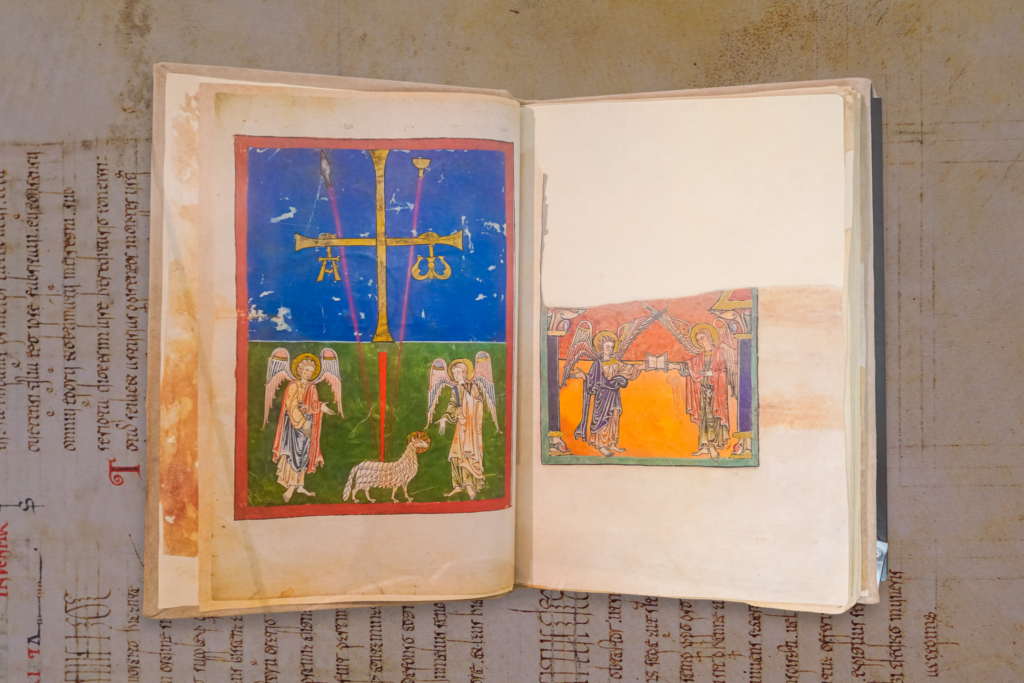
- Audio 01
Beatus of Saint Peter of Cardeña
At the head of the chapel, there is a collection of medieval manuscripts consisting of four facsimile reproductions related to the Asturian monarchy. These reproductions showcase the remarkable craftsmanship of scribes during the medieval period – individuals whose profession involved hand-copying texts and dictations. They also reflect the splendor of Asturian culture during the time of the Kingdom of Asturias.
The first manuscript, the Beatus of Saint Peter of Cardeña (late 12th century), is one of the copies of the Commentary on the Apocalypse of Saint John, originally written by the Beatus of Liébana around the year 776. Beatus not only argued that Christ is the Son of God in opposition to the adoptionism of Bishop Elipando of Toledo, who claimed Christ should be viewed only as the adoptive Son of God; this theological debate was intertwined with the political interests of defending an independent Christian Spain, aligned with Charlemagne and Rome, against Islamic power.
The Commentary on the Apocalypse gained immense significance during the Middle Ages, resulting in numerous handwritten copies, collectively known as Beatos. Many of these copies were embellished with exquisite images and represent one of the high points of medieval iconography. Due to their importance and visual quality, the Beatos have been included in UNESCO’s Memory of the World Programme since 2015.
This Beatus is a richly illuminated manuscript that originates from the Cistercian Abbey of San Pedro de Cardeña in Burgos. Dating from the end of the 12th century, it is regarded as one of the latest examples of the Beatus manuscripts.
The text, spread across its parchment pages, is arranged in two columns and utilizes Carolingian minuscule, a script developed during Charlemagne’s empire as a standardized form of writing in Europe to ensure the Latin alphabet could be easily recognized by the small educated class in various regions. The miniatures were created by three different artists, who lavishly illustrate the accompanying texts.
Miniature 1B, displayed in the case, depicts two angels flanking the mystical lamb, whose head is surrounded by a luminous halo, symbolizing holiness. One of the angels carries the three nails of Christ’s Passion. From the lamb, a lance and chalice emerge and ascend to the upper register. Against a blue background, the Cross of Oviedo is prominently featured, with the alpha and omega hanging from its arms.
This imagery carries a dual symbolic meaning. On one hand, it is religious, representing the triumphant Church through the resurrection of its Redeemer. On the other hand, it holds political significance, as the cross depicted is the emblem of Alfonso II the Chaste, within whose reign the writing of the Commentaries on the Apocalypse by the Beatus of Liébana occurred.
